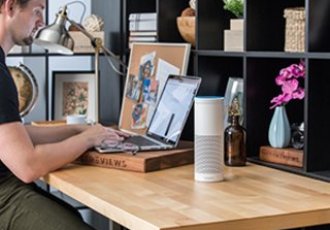BestReviews is reader-supported and may earn an affiliate commission. Details
We recommend these products based on an intensive research process that's designed to cut through the noise and find the top products in this space. Guided by experts, we spend hours looking into the factors that matter, to bring you these selections.

Ever try to plug your American hairdryer in at a hotel room in, say, Paris? If so, you probably recall spending that morning with wet hair. When you are traveling internationally, outlets can vary in their voltage and type. The right international plug adapter can give you access to power anywhere.
With 14 different types of sockets around the world, it's crucial that the adapter you choose is compatible with the outlets at your destination. Some socket types are widespread and used across several continents while others are specific to smaller regions or used only in a few countries. If you want to charge multiple devices at once, additional features like multiple outlets or USB ports are required.
With factors like voltage and surge protection, there is a lot to think about — and little wiggle room — when shopping for an international plug adapter.

Determining the socket types in the regions you are traveling to is the first step when searching for an adapter. There are 14 socket types (or plug types) recognized by the IEC (International Electrotechnical Commission). The following are the most popular plug/socket types, but there are many more, some of which are only used in one or two countries.
Each socket type receives pins — the metal prongs of a plug — in a different way and sometimes receives a different number of pins. Most plug adapters have several switches that extend different plug types, so you’ll be covered in a number of countries. Some adapters have only a single plug type and a single outlet type on the opposite side. Research the area you are traveling to carefully to determine what socket types are common at your destination. You can also contact your hotels and ask what types of sockets they offer.
While an international plug adapter will allow your device to draw power from a socket, it won’t usually convert the voltage of the socket.
Sockets in Canada and the U.S. typically output 110 to 127 volts, and most North American appliances and devices are designed to draw energy safely from these sockets. Other parts of the world have sockets that output 220 to 240 volts. Many devices are dual-voltage — meaning that they can accept either voltage range safely.
Before you travel, check the voltage of your appliances and devices. If you plug a device into a socket that puts out a higher voltage, your device will most likely break if it doesn’t automatically turn off when it senses the incorrect voltage. If the device requires a higher voltage than the socket can provide, the device may not function properly or may not turn on at all.
If your devices won’t work where you’re taking them, you will need an appropriate voltage converter — a separate accessory from an international plug adapter. Some international plug adapters double as voltage converters, but these are usually significantly more expensive.
You should have an idea of how many devices you will need to power or charge at a time. Most adapters can accommodate one Type A plug and one or two USB devices, often at the same time. If you need to power multiple AC devices, you may need an additional adapter. Some models may have additional Type A outlets, so you can power two to four devices at once.
Many international plug adapters have safety shutters, which prevent direct contact with the plugs to reduce the chance of electric shock. You should also consider adapters with built-in surge protectors to keep valuable devices like phones and computers safe while plugged in.
Packing light can be crucial when you’re traveling. If you have limited space, look for a compact international plug adapter. In many cases, this means looking for one that is limited in its plugs. Most international plug adapters are fairly compact, often under 8 inches in length and height.
Inexpensive: Basic adapters for $5 to $10 usually include several pieces. In a sense, they’re not truly “international” unless you bring all of the adapters with you. However, you can bring only the necessary adapters to save space in your luggage.
Mid-range: For $10 to $20, these adapters usually include several plug types and use the more standard block model with switches for each plug. Some adapters in this range may also be surge protectors and include USB ports.
Expensive: For $20 to $40 are adapters with a wide variety of plugs and sometimes several Type A outlets. If you need to power multiple devices, adapters in this range may be your best option.


Q. Why are there different types of wall outlets in the first place?
A. When electricity became commonplace in homes, outlets were developed independently around the world, and standardization has presented too great a challenge.
Q. Can all adapters fit Type A three-pin plugs?
A. No. In fact, many are missing the third hole, which houses the round earth plug that grounds the wire. If you have a device with a three-pin plug, be sure to purchase a compatible adapter.
Q. Is it safe to leave an adapter plugged into a socket when nothing is plugged into it?
A. You should always unplug your adapter when it is not in use.
Get emails you’ll love.
Learn about the products you’re wondering if you should buy and get advice on using your latest purchases.
